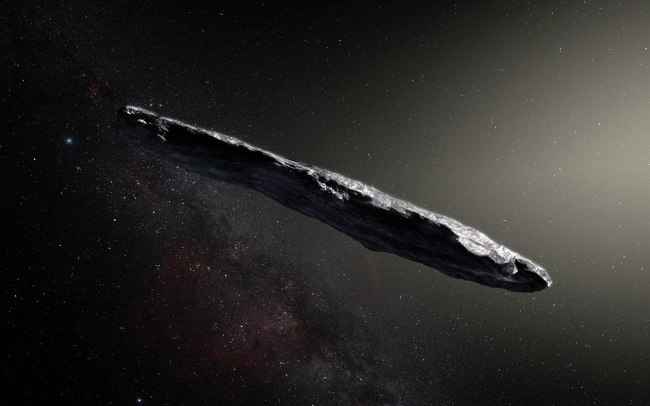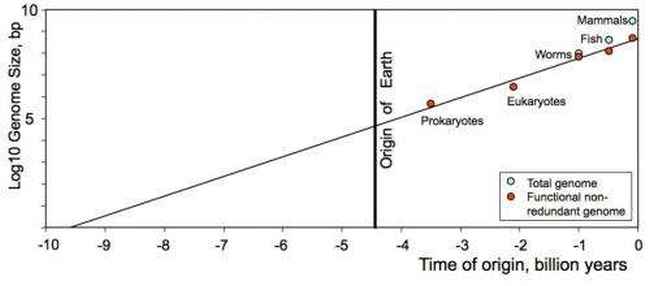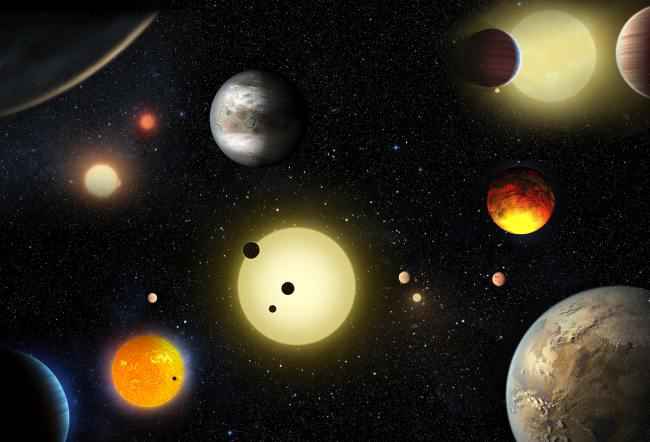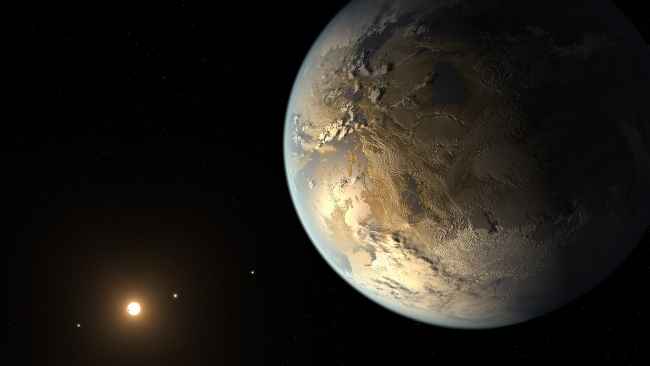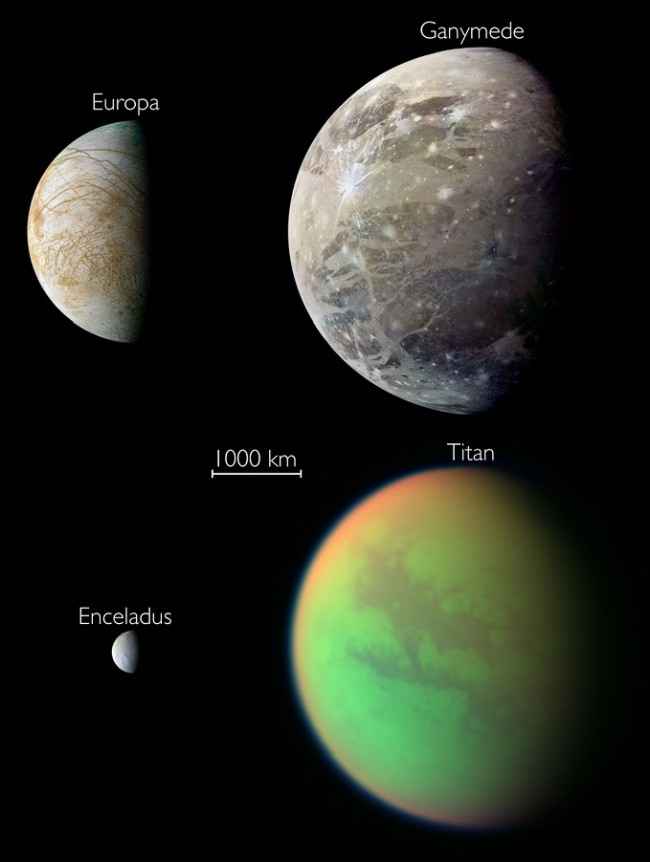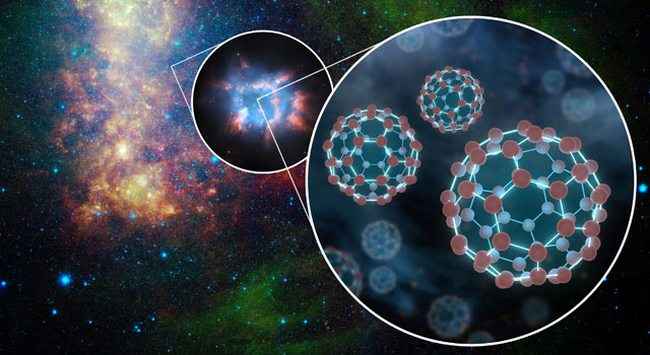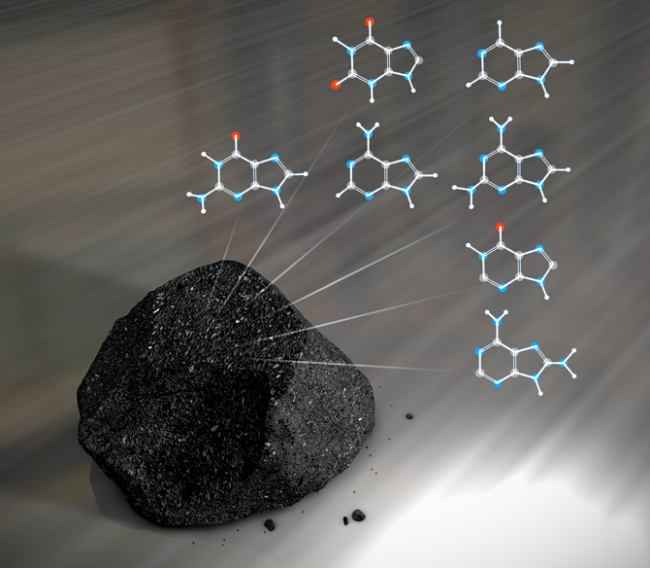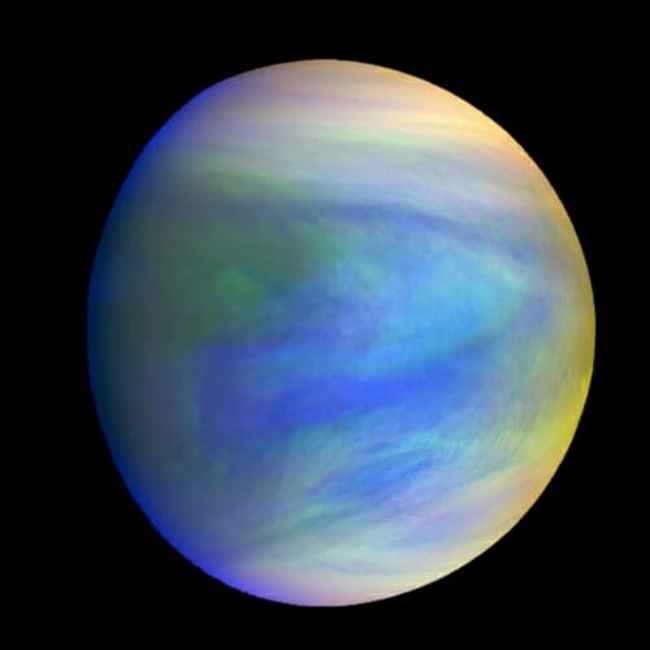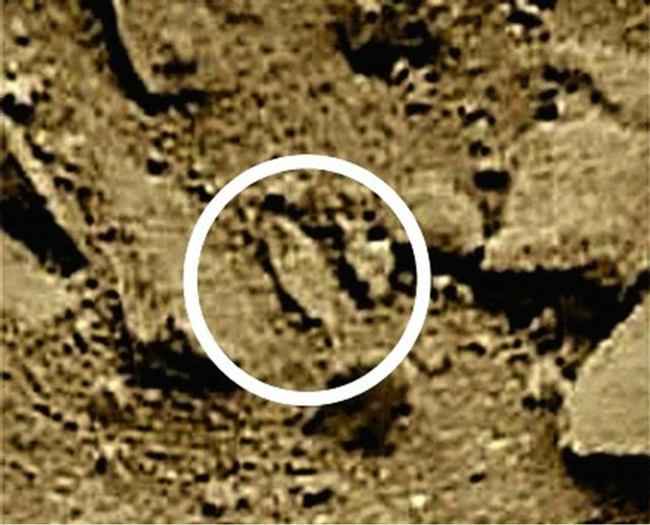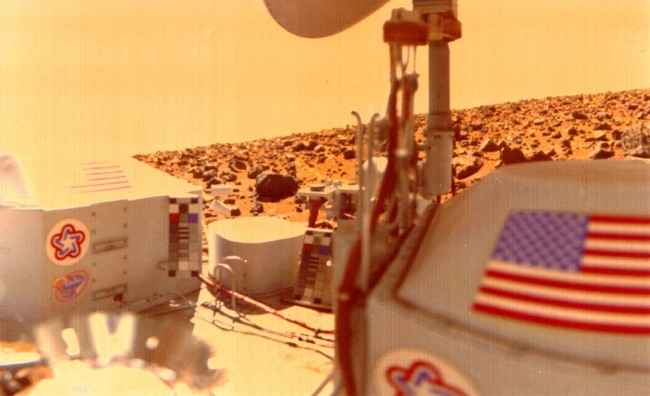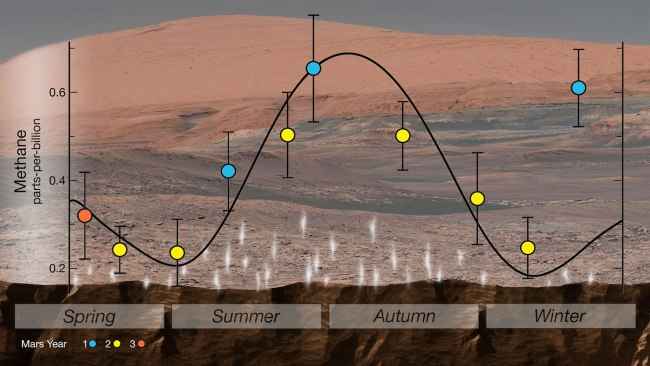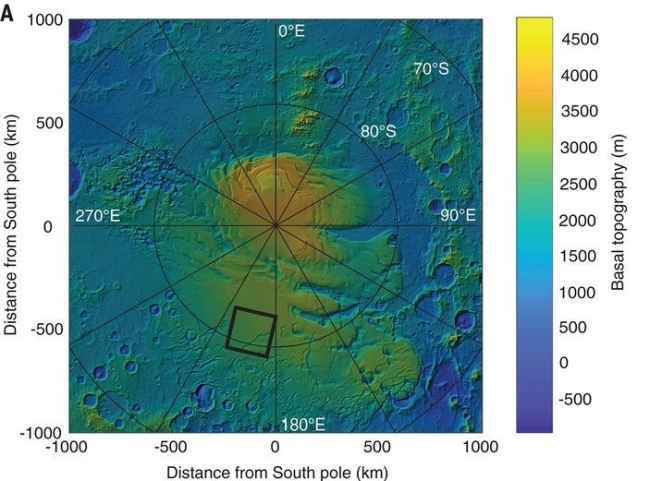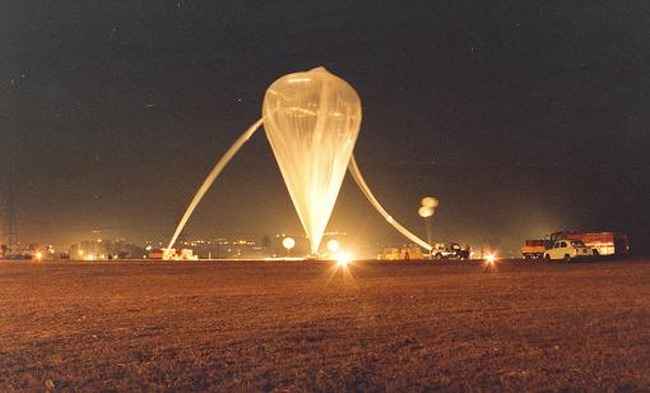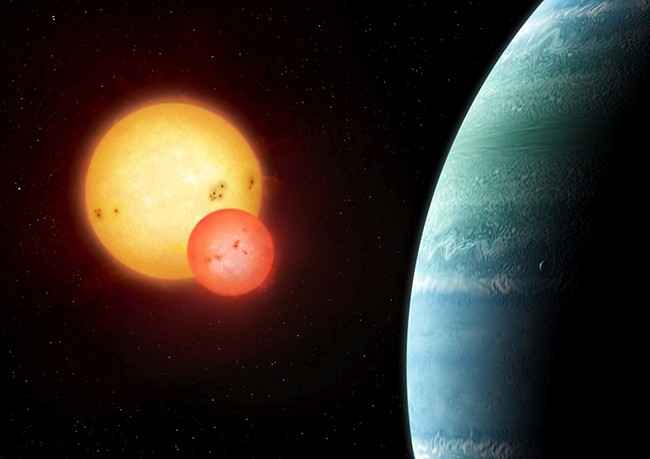18 scientific papers that hint at the existence of aliens

In 1997, Galileo flew through a geyser erupting from Europa, a Moon of Jupiter. Hubble spotted a few hazy pixels that were not there previously, which could be interpreted as jets of water in 2012 and 2016. It was only after these observations, that the astronomers figured out that Galileo had passed through the region of the geyser, and went back to scan the old data. Despite all these observations, there is only evidence that there are geysers on Europa, but it is not considered a confirmed fact. That is just the way science works. While gathering direct evidence of life on exoplanets is incredibly difficult, we might have such a breakthrough after the launch of the James Webb Space Telescope. Meanwhile, other approaches use statistics, modelling and theoretical approaches to finding evidence of alien life. When extraterrestrial life is finally confirmed, it will be the end result of many, many scientific papers that point towards that ultimate conclusion, and here are a few of them.
Galactic Panspermia
Artist’s impression of ʻOumuamua. Image: ESO/M. Kornmesser
This research investigated the rate at which interstellar objects such as ‘oumuamua could potentially spread life across star systems within a galaxy. Normally, such objects have acquired incredible velocity, and pass through systems with barely any interactions with the celestial bodies. Think of them as a cosmic pinball, bouncing around in a galaxy wide table. However, given long enough time scales, the researchers concluded that even interstellar asteroids tend to be captured. This means that life could hitch a ride on space rocks not just between planets in a single solar system, but across an entire galaxy. Given enough time, this is a viable way for life to spread throughout a galaxy, even if it emerges only once.
Paper Title: Galactic Panspermia
Life before Earth
Moore’s law is usually applied to the increase in complexity and prowess of computers. Researchers used the same logic on biological life, and found that the evolution of complexity of life forms does track Moore’s law. First we had simple life forms such as bacteria. Then we had the simple plants, fungi and unicellular animals such as the amoeba or the protozoa. Then came the worms, fish, mammals and eventually apes. This does not mean that human beings are the most genetically complex organisms around, the most evolved creature is actually the Daphnia pulex, or the water flea. When plotted on a line, all of these life forms can be placed neatly along a line that shows genetic complexity… only the line extends to before the formation of the Earth around 4.5 billion years ago. The paper was a theoretical exercise, to check how closely evolutionary complexity tracks Moore’s law. The researchers found out that they were right about that hunch, but also that life may well be older than the Earth.
Paper Title: Life before Earth
The habitable epoch
This one is a totally unexpected finding. The way that astrobiologists go around identifying planets suitable for supporting life as we know it, is to look for rocky exoplanets in the habitable zone around the host star. The planet should be in the “Goldilocks Zone”, where the temperatures are just warm enough and cold enough to support liquid water on the surface. When the universe was very young, just about 10-17 million years old, the conditions were such that any rocky planet could support liquid water on the surface, irrespective of the distance from their host star. This paper indicates that the earliest life forms could have emerged at the very dawn of the universe itself, as the conditions were suitable for life, on any rocky planet.
Paper Title: The Habitable Epoch of the Early Universe
Superhabitable planets
Kepler 186-f. Credit: NASA.
Most searches for exoplanets with conditions suitable for life use Earth as a reference point, which makes sense considering that it is the only planet we know of so far with life on it. However, some scientists have pointed out, what if Earth is not the most habitable planet we know, and there could be other planets out there where the conditions are even more suitable for supporting life than Earth. Such planets are called superhabitable worlds. This paper also looks at other conditions that can create conditions to support life beyond the Goldilocks Zone of a star. A gas giant can cause tidal heating within an icy moon for example, providing the energy required to support life. The conclusion of the paper is that worlds with life on it need not be like Earth, and Earth might not be particularly suitable for life.
Paper Title: Superhabitable Worlds
Ice world life is the norm
Potentially habitable moons in the Solar System. Credit: Ted Stryk
This is another paper that challenges the assumptions of finding life on rocky planets in the Goldilocks zone around a host star. This study focuses on ice worlds, such as Europa and Enceladus. These icy worlds are not in the habitable zone of the host stars, but have global subsurface oceans. There are a number of mechanisms that can provide the energy to keep the water in a liquid state, and others to provide the nutrients necessary to sustain life. The study indicated that there could be 100 to 1000 times the number of ice worlds in our galaxy, as compared to rocky planets in the habitable zones of their host stars. Europa, Ganymede, Callisto, Enceladus and Titan are all icy worlds in the Solar System that can have the conditions to support life. In fact, Titan may support two forms of life, one on the surface, and one below. The conclusion of the paper is that life may be more common on ice worlds in the galaxy, than rocky exoplanets.
Paper Title: Subsurface Exolife
An Earth around every star
The Green region is the habitable zone of different types of stars. Credit: NASA.
The current methods of detecting exoplanets have some very stringent requirements. The most efficient way we have right now is to monitor lots of stars for long durations of time, to spot dips in their brightness, which is an indication of a planet passing in front of the star. Such an event is known as a transit, and transits can only happen if the planet passes between its host star and the astronomical instrument on Earth or in Earth orbit. Not all star systems may have an alignment that is suitable for detection of these planets from Earth. Researchers used statistical methods to find out how many planets are likely to be in the habitable zone around all stars. The research suggests that on average, every star has two planets in the habitable zone around it.
Paper Title: Using the Inclinations of Kepler Systems to Prioritize New Titius-Bode-Based Exoplanet Predictions
Space dust is bacteria
Credit: NASA
This one is stunning in its implications. Researchers analysing cosmic dust came to a very stunning conclusion. There was an irregular amount of dust found ambiently in interstellar space, of a particular size. The size, was an exact match for frozen, dormant bacteria. The researchers stumbled on this conclusion, and were astronomers, and were not particularly looking for an explanation on the origin of life. However, any alternative explanation simply did not match up to the observations. According to the research, space is seeded with dormant bacteria, waiting to be brought to life from an asteroid impact on a habitable zone planet. Life is pervasive across the universe.
Paper Title: Spectroscopic Evidence of Cosmic Life
DNA from asteroids
Credit: NASA's Goddard Space Flight Center/Chris Smith
Researchers have been finding bits of DNA known as nucleobases in meteorites. It was difficult to say if the nucleobases originated in space, or were found on the meteorites because of contamination by organisms on Earth. NASA funded research has shown that these nucleobases did in fact originate in space, that they were common in asteroids. The finding indicates that any impact event introduces ready made blocks which would have helped with the emergence of life on Earth. If DNA is made up of lego bricks, think of these meteorites as introducing unique bricks that could not have been made from the chemistry on Earth.
Paper Title: Carbonaceous meteorites contain a wide range of extraterrestrial nucleobases
The Clouds on Venus
There are periodic dark patches in the clouds of Venus, that have puzzled scientists for decades. These are episodic patches. One hypothesis is that these patches are actually microbial life, similar to the algal blooms on Earth. Probes sent to Venus have showed that the atmosphere of Venus is actually conducive to life. Additionally, the size of the particles that make up the dark patches are very close to the size of bacteria on Earth. However, the probes cannot make a distinction between organic particles and inorganic ones. Venus had conditions conducive to life for as long as 2 billion years ago. This means that life had more time to evolve on Venus, than say Mars. Microbial life forms could have been transported into the atmosphere by natural processes such as volcanism. Here, these microorganisms could have found a habitable niche where they have thrived.
Paper Title: Venus' Spectral Signatures and the Potential for Life in the Clouds
The Amisdas on Venus
According to Russian researchers, the Venera landers on Venus have captured direct photographic evidence of venusian life forms. These creatures have a clear head, body and tail, and are distinguished from their rocky surroundings because of their soft outlines. Some of the supposed creatures have even left trails behind them in the soil, which indicates their movement. According to the researchers, the roughly fish shaped life forms are supported by limbs. There are multiple similar shapes in different configurations in the panoramas captured by the Venera landers, so if the hypothetical organisms do exist, we have captured images of multiple individuals. However, the researchers acknowledge that the objects cannot be shown to be alive on the basis of the pictures alone. Another paper from the same researcher explores a number of hypothetical life forms, which all appear to be moving in the images, and even making sounds that were captured by the acoustic instruments on board.
Paper Title: Amisadas: Hypothetical Venusian Fauna at the Venera-14 Landing Site, Possible Signs of Life on the Planet Venus
The LR experiment
The Viking Lander on Mars
In 1975, NASA sent two Viking landers to Mars. The probes collected samples from the surface, and analysed it for signs of life. While the samples did not test positive for organic material, they did test positive for signs of metabolism. If the same experiment were to be conducted on Earth, the results would be interpreted as a clear indication of organic life. The apparatus dropped a small amount of food, and subsequently detected any gases that were emitted by microorganisms that consumed the food. This LR test came out as a positive in not one, but two locations on Mars. However, the researchers are conservative, especially when it comes to something as big as the discovery of ET. The results of the LR (“Labeled Release”) experiments seem to be inconclusive, but some scientists have argued that other biological processes cannot adequately explain the observations, and that the best possible explanation is that there is a form of life on Mars. One of the authors of the paper is Dr Gilbert V Levin, the designer of the original experiment on Viking landers.
Paper Title: Life on Mars? The Viking labeled release experiment
Methane on Mars
The seasonal changes of methane on Mars. Credit: NASA/JPL-Caltech.
The presence of methane in the atmosphere of a planet is considered a biosignature, an indication that the planet supports a form of life similar to that on Earth. Turns out, that Mars has methane in its atmosphere, more than there should be considering that the atmosphere is constantly being stripped away by the action of the Sun. This indicates that there is some kind of activity on Mars that is replenishing the methane into the atmosphere. Measurements from instruments has shown that the methane deposits into the atmosphere are periodic, indicative of a regular, repeated process. While there can be abiological processes such as outgassing from rocks and volcanism that can replenish the methane in the atmosphere of Mars, the finding also opens up the possibility that there are life forms on Mars right now.
Paper Title: Methane on Mars
Evidence in Martial soil
The radar surveys were conducted in the Planum Australe region on Mars.
This paper is the result of a careful study that conducted a centimeter by centimeter comparison of structures on Mars captured by NASA’s Curiosity Rover, to structures on Earth. The Earth structures were known to be created by life forms, and very similar structures were found on Mars, and could perhaps have been created by microorganisms billions of years ago. The structures were from an area on Mars known as Gillespie Lake, which saw seasonal floodings, over 3.7 billion years ago. During this time Mars was believed to be warmer, and very likely had a much thicker atmosphere. More detailed investigations would require microscopic analysis of the structures, or sample return missions from Mars.
Underground life on Mars
Italian researchers found evidence of underground saltwater lakes on Mars, using data recorded by the radar instrument on board the Mars Express spacecraft. The lakes were found beneath the southern ice cap. These pockets of water, could potentially have oxygen dissolved in them, allowing them to support microbial forms of life at least. Future missions can potentially dig to these underwater lakes, to find concrete evidence of Martians.
Paper Title: Radar evidence of subglacial liquid water on Mars
Organisms in the Stratosphere
Caption: The ISRO balloon used to capture organisms from the stratosphere. Credit: ISRO
In the top most regions of the Earth’s atmosphere, the upward movement of particles is very rare. ISRO, working with TIFR researchers sent up balloons to the stratosphere to check for life forms, and found them in 2001 and 2009. The experiment was repeated to rule out any possibility of terrestrial contamination. Three of these bacteria were species not found on Earth, and were more resistant to ultraviolet rays. The three new species were named Janibacter hoylei, Bacillus isronensis and Bacillus aryabhata. Now the question is what kind of processes can loft these bacteria from the Earth to the stratosphere. Any process of that kind is relatively rare, and volcanism is a proposed mechanism. However, particulate matter ejected into the stratosphere by volcanism tends to settle back to the lower regions of the atmosphere relatively quickly. Another explanation is that the bacteria are introduced to the stratosphere by comets, and are therefore extraterrestrial in origin.
Paper Title: Recovery of Cometary Microorganisms from the Stratosphere
ET in the cloud
We have at least a rough idea of where technology is headed in the future, and one of the emerging technologies is brain computer interfaces. The eventual goal of that path is to provide a kind of virtual life by backing up the entire brain into the cloud. Maybe individual brains can communicate with each other at the speed of light, allowing for the emergence of a hivemind, which exists entirely in the quantum computers of the future. This is what is called post biological intelligence, and it is very likely that other civilisations have reached that phase or beyond it. This paper explores the possibility of meeting alien life in an entirely virtual form, beings that have already successfully managed to disembody their minds. It also explores the motivations of civilisations and hive minds that have moved beyond survival. Fair warning though, if you actually read the paper, this is a little on the gooey side, as it talks of sparks flying when two alien clouds meet.
Paper Title: Outer space and cyber space: meeting ET in the cloud
K3 clusters
This is a paper that investigates the emergence of galaxy spanning civilisations, that can use the energy of an entire galaxy. Such a civilization is considered a Type III on the Kardashev scale. The fact that we have not already detected a civilisation of imperial aliens who believe in aggressive expansion, indicates the rarity of such civilisations. According to the study, such a civilisation emerges only once in a billion years, within a radius of 5 billion light years. The study also indicates that we are more likely to find clusters of colonised galaxies, as against a single colonised galaxy, if we are ever to detect a K3 civilisation.
Paper Title: Estimates for the number of visible galaxy-spanning civilizations and the cosmological expansion of life
Circumbinary Planets
The Kepler 453 system. Illustration copyright Mark Garlick
The habitability of planets in orbit around a pair of stars is extremely complex, as the planets experiences a wide variety of conditions. This study models the effects of planets in orbits around binary star systems, and comes to the conclusion that such star systems could provide very viable niches for life. The tidal action of the two stars act together to preserve the atmosphere of the planets in orbit around both of them. The atmosphere stays stable for longer periods than planets in orbit around a single star, and thus provides more time for life to emerge and evolve. The study extends the habitability to any moons in orbit around circumbinary planets as well. According to the study, circumbinary planets could be the best niches for life in the galaxy.
Paper Title: Circumbinary Habitability Niches
Aditya Madanapalle
Aditya Madanapalle, has studied journalism, multimedia technologies and ancient runes, used to make the covermount DVDs when they were still a thing, but now focuses on the science stories and features. View Full Profile

